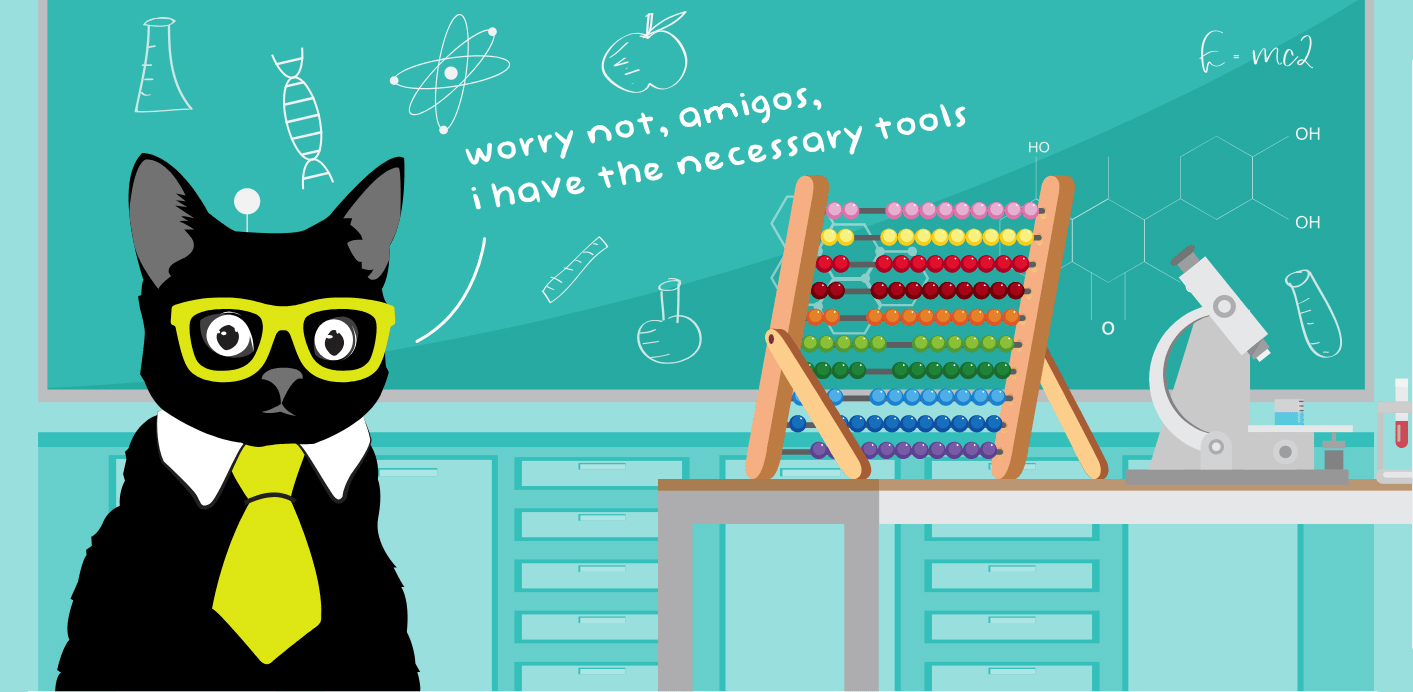Ever wondered if your agents have everything they need to solve customer issues fast?
It’s not just about providing solutions anymore; it’s also about how quickly your support team can deliver them. With customer expectations reaching new heights, speed is becoming increasingly important in delivering an excellent experience.
What is AHT?
Average Handle Time (AHT) is the average amount of time that a customer service representative spends handling a customer interaction.
The handling time refers to all the tasks involved in the interaction — greeting the customer, collecting information, resolving the problem, and completing any documentation or work after the conversation.

Why is Average Handle Time (AHT) important?
According to the latest Customer Service Quality Benchmark Report, 25% of all surveyed CX professionals track AHT.
No wonder. AHT provides insights into the efficiency and effectiveness of your customer service operations. It’s directly related to other ticket-based metrics such as Replies per Conversation, Ticket Volume, and Customer Satisfaction Score.
Knowing the average time it takes to handle customer interactions can help you gauge customer satisfaction and optimize resources to meet demand without long wait times. Generally, the lower the Average Handle Time, the more contacts an agent can work through.
This is particularly important for call centers. By analyzing the average talk time, call center managers can identify bottlenecks, make improvements, and plan agent shifts effectively to ensure smoother support operations.

How to calculate Average Handle Time?
To calculate average handle time, add up the total amount of time spent on resolving conversations and divide it by the total number of conversations.
Average Handle Time formula:
Total time spent on resolving conversations / total number of conversations = AHT
The result will be the average amount of time it takes to handle a single customer call or support interaction, expressed in seconds or minutes.
For example, let’s say that your total handle time for all customer interactions adds up to 1,200 minutes during a day, and the total number of conversations is 400. In this case, the AHT equals 3 minutes per interaction (1,200 minutes / 400 interactions).
You might be wondering, is this a good Average Handle Time?
Let’s find out.

What’s a good Average Handle Time?
According to the latest Customer Service Quality Benchmark Report, the AHT benchmark for 2023 is 9 min 44 seconds.
AHT benchmarks are likely to vary, depending on the industry and the type of support provided. For example, a software company that offers live chat support might have a faster AHT than a cable company with a large call volume.
Keep in mind that AHT benchmarks should not be the sole focus of your support team. The overall support quality is just as important as the speed of the response.

How to reduce AHT?
Improving your AHT is not a one-time effort, but a continuous process of learning and optimization. Still, there are a few things you can focus on to make a difference:
Emphasize First Call Resolution (FCR)
Do you track First Call Resolution (FCR)? It might seem counterintuitive at first, but focusing on a different metric can actually help you reduce the Average Handle Time.
Put on your thinking cat for a moment. When customers get their issues resolved during the first interaction, they don’t have to follow up, which lowers the total number of tickets and enables agents to focus on the quality of their conversations.
Thomas Laird, CEO of Expivia, did the math:
The good news is that comprehensive agent training, providing your team with up-to-date resources, and investing in the right tech tools can positively affect both FCR and AHT.
![]()
Provide your team with up-to-date resources
First things first, proper contact center training is crucial if you want to hit your AHT goals. Your team won’t be able to answer customer queries fast if they’re not proficient with your products or services.
But, training agents with just the basics may not be enough to solve every customer issue in just one interaction.
Your support reps have to be ready to give answers about nuanced features, functionalities, and situations on the spot. It’s not fair to expect every agent to know everything off the top of their head, no matter how well they’ve been trained.
To make things easier for your team, create an internal knowledge base that agents can access during customer interactions. Consider the following:
- Central repository. It’s important to have all the necessary information available in one place. Agents are busy handling customer calls and won’t have time to search through multiple knowledge bases.
- Structured information. Make sure the data is easily accessible and searchable for support reps. If your knowledge base isn’t well-organized, agents will waste valuable time trying to find what they need.
- Search functionality. While searching by keywords can take time, it can be a lifesaver when you’re feline lost in your own knowledge base. Having a keyword-based search option ready as a safety net is crucial in such situations.
- Up-to-date information. Contact centers heavily rely on their knowledge bases, so it’s essential to regularly review and update the stored information. Give your contact center agents the ability to flag outdated articles and request new ones for missing topics. Your agents are the best resource for maintaining and improving your internal documentation.
⭐ Apart from providing your support reps with a comprehensive knowledge base, consider offering one to your customers as well. Self-service options make it easier for customers to resolve their issues, while your agents gain more time to better serve those with more complex queries.

Leverage support technology
Support automation is hailed as a game-changer for customer service departments. And rightly so.
By automating and enhancing repetitive, time-consuming tasks, your agents will have more time on their hands to focus on what matters most: quality customer experience.
Aside from knowledge bases and customer portals, there are at least a few different tech solutions that can help you reduce AHT:
- Canned responses & call scripts. Rather than making your team repeatedly come up with custom answers to the same questions, provide them with canned responses and standardized call scripts. They can guide your agents in handling common issues faster.
- Advanced call routing. With the right rules in place, you can direct customer calls to the most suitable agent, based on their skill level and expertise. Make sure to prioritize urgent or complex issues, assigning them to experienced agents who can efficiently handle them in a timely manner.
- Performance analytics. Dedicated customer support or call center software can not only streamline your support operations, but also provide information on ticket volumes, wait times, and handle times. Knowing these numbers can help you make data-driven decisions and implement targeted improvements.
By leveraging technology, you can improve your agent performance and, ultimately, reduce the Average Handle Time in your contact center. If you’re not sure where to start, evaluate existing processes and tools used by your customer service representatives.
The key is to identify areas of improvement and implement support automation where possible. Opt for user-friendly interfaces and integrated systems that can help your agents access information quickly and improve handling time.
Remember, while reducing AHT is important, it should never be prioritized over the quality of customer interactions. Strive for a balance between efficiency and satisfaction, ensuring that AHT improvements align with delivering exceptional customer experience every time.

Limitations of Average Handle Time (AHT)
As mentioned earlier, Average Handle Time (AHT) is a key metric that reflects the efficiency and productivity of your agents and support operations.
A lower AHT brings numerous advantages. It means that you can handle more tickets with fewer resources, reducing costs and boosting profitability. It’s a paw-sitive sign that your agents are skilled, knowledgeable, and confident in swiftly resolving customer issues.
However, while AHT is important, it’s crucial to remember that it’s not the sole indicator of agent performance and customer experience. A lower AHT doesn’t automatically guarantee customer happiness, satisfaction, or loyalty. In fact, solely focusing on reducing AHT can inadvertently lead to rushed, impersonal, or incomplete interactions. In the long run, this may damage customer relationships.
Consider the bigger picture. A lower AHT might mask underlying problems such as poor quality, high repeat calls, low first contact resolution rates, or excessive customer effort. It’s vital to take a holistic approach and prioritize delivering exceptional customer experiences rather than solely fixating on reducing AHT.
According to Philip Lewis, Customer Service Manager:
Setting realistic and flexible AHT goals that account for different types of tickets, customers, and situations is essential. Your agents should be trained to handle calls effectively and with empathy. Then, using the right tools and resources to quickly and accurately resolve issues
It’s also important to consider other factors to get a complete picture of your customer experience. Metrics like CSAT, NPS, FCR, and IQS are valuable in understanding the overall service quality and how customers feel about their interactions. By looking at these different metrics together, you can gain a better understanding of how well you’re actually meeting customer needs.

Your AHT is good enough
Not all customer issues can be solved fast. Even though AHT is a valuable metric for measuring the efficiency and effectiveness of customer service operations, it’s not the only one that counts.
Focusing on First Call Resolution (FCR) can significantly reduce AHT, while adding CSAT and IQS to the mix can give you a more comprehensive overview of customer needs and overall service quality. Prioritize realistic and relevant customer service KPIs. Only this way you’ll be able to improve customer satisfaction, loyalty, and overall contact center performance.



